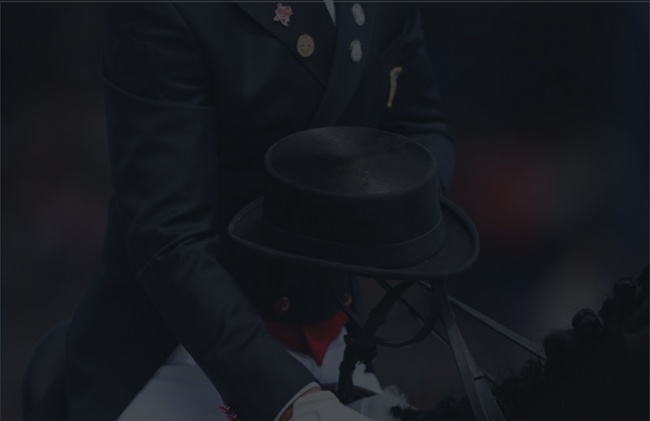
Trakehners, one of the noblest warmblood horses on the planet with a proven versatility in sport. Whether super stars in dressage or fearless on the cross country course, Trakehners have made their mark in history. However the last two decades, dressage athletes have looked away from the breed and explored alternative options. The Trakehner horse seems to have become expensive hobby horse of the bloodline aficionado instead of the option for top level competition sport.
What has happened that Trakehners are no longer coveted for international dressage sport and so few of them make their way to the highest echelons.
A Royal Breed
The Trakehner horse has an amazing history of 288 years. It is the oldest riding horse bred in Germany.
Genetically, the Trakehner breed can be traced back to the foundation of the Main Stud in Trakehnen by royal decree of the Prussian King in 1732. To date, Trakehners are the only riding horse breed bred in accordance with unfaltering breeding principles. They have a high genetic proportion of English and Arabian thoroughbred, Shagya and Anglo-Arabian, and are selected according to strict criteria
By 1944 the Trakehner population was in full bloom, it was estimated to include 25,000 mares and 1,200 stallions. However, the Trakehner neared extinction in World War II but was saved thanks to the efforts of Alexander Prince of Dohna-Schlobitten, who organized the largest refugee route from East Prussia to Hoya, near Bremen with 330 refugees and 140 horses to save the breed. Others fled with their Trakehner horses across Germany. In 1945 only 1,500 animals remained in the turbulent post-war time. Just 27 mares from the Trakehnen Main Stud were saved.
In 1947 Dr. Fritz Schilke and Siegfried Freiherr von Schroetter worked tirelessly to save the breed and founded the modern version of the Trakehner breed society. In 1962 the first Trakehner Stallion Licensing took place.
Expensive Hobby Horses?
With only XX foals born per year, the Trakehner breed society is a small registry and has become an affair of die-hard breed aficionados. Small numbers make the breed exclusive, which shows in the prices are paid for trakehner horses at stallion licensings and foal auctions.
At the 2018 Trakehner Stallion licensing the average price for a 2.5 year old, licensed colt was 71,900 euro!
These averages are not inflated by megalomaniac stallion owners paying one million euro or more for one stallion in the biggest studbook auctions (Hanover, Oldenburg, Westfalian). Such obscene prices are paid because those stallion owners can cater to a much larger breeding market and make the investment work. The Trakehner horse has become a collectible for just the fans and big stallion owners or dressage riders will not be seen near the Trakehner arena to source their new rising star.
The small club of Trakehner lovers is willing to spend a large amount of money for a stallion that will breed to just a a few mares and whose career in sport at a high level is questionable.
But Where are They in Sport?
A quick look at the Trakehner licensing champions in the last 20 years yields only two examples of stallions proving himself in international dressage sport, but even then, not at the biggest international shows. They are In Flagranti (under Gillian Wright) and Grand Passion (under Bernadette brune, Alexander Ayache).
The best of the best is supposed to be picked at the stallion licensing. A Look at the list of champion stallion the past 17 years shows champions In Flagranti (2003), Le Rouge (2004), Herzensdieb (2005), Songline (2006), Grand Passion (2007), Iskander (2008), Kentucky (2009), Imhotep (2020), Hawelmann (2011), and Donauruf (2012). The majority of these have all vanished from competition sport, let alone have even properly participated at big recognized (national) events.
Even the younger group of stallions - Kissinger (2013), Sir Sansibar (2014), Perpignan Noir (2015), His Moment (2016), Kaiser Milton (2017), Kattenau (2018), Ferrari Forever (2019) failed to make an impact in young horse sport. At the moment, there might potentially be a future in sport for two. Sir Sansibar is ow at Hof Kasselmann being competed at local events at M-level and Perpignan Noir, after a failed sport break-through with Anabel Balkenhol, has been re-allocated to Ingrid Klimke. To prove a point, the 2011 Trakehner licensing Champion Kissinger, who descends from highly unique, old Trakehner bloodline founded by the family Alexandra, Countess of Dohna-Schlobitten, competes in just A-level amateur classes in Germany.
A Few Shining Stars
There are a few Trakehner bred horses who certainly reached the top in sport. Beatrice Burchler-Keller's Dalera TSF (by Easy Game) is the shining beacon. Under Jessica von Bredow-Werndl she won team gold at the 2018 World Equestrian Games and team gold and kur bronze at the 2019 European Dressage Championships in Rotterdam.
Other notable Trakehners at international Grand Prix level are Terhi Stegars' late Axis and Rikke Svane's 2018 Danish WEG team horse Finckenstein. Anne Troensagaard's Kipling (by Hofrat) won bronze at the 2017 World Championships for Young Dressage Horses in Ermelo. And then there is the Russian Trakehner Mister X under Inessa Merkulova.
Why are so few Trakehners making it in sport?
Let's Ask the Experts